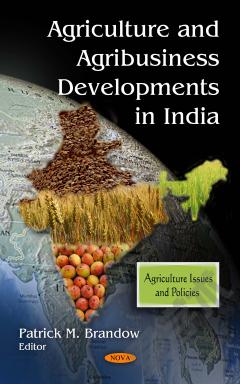Rural Development and Management in India: Opportunities and Challenges
Today’s socio-economic scenario is highly volatile and risky. To sustain the growth and development is a big challenge for various national economic entities. After liberalization, privatization and globalization, most of these entities including national and multinational firms targeted the urban population for growth. It has been more than twenty-five years, and these urban markets are showing signs of maturation and saturation. This resulted in agencies and organizations looking for new avenues in order to sustain themselves. In such a scenario, India’s rural markets have emerged as a new hope for them. The hinterlands in India consist of more than 650,000 villages, which represent approximately 850 million consumers. This number is roughly equal to 70% of the total population. These rural consumers contribute to approximately half of the country's Gross Domestic Product (GDP). Since 2000, India’s rural sector showed a tremendous growth in its per-capita Gross Domestic Product (GDP) as compared to its urban counterpart (6.2% CAGR versus 4.7%). By the end of 2018, rural GDP is estimated to reach US$ 20 billion and touch US$ 100 billion by 2025. According to McKinsey Global Institute, the annual real income per household in rural India would rise to 3.6% by 2025 from the 2.8% over the last 20 years. Normally, it is assumed that urban consumers have more disposable income and their spending pattern is different from that of rural consumers. But the last decade has witnessed a change in this trend, with rural consumers exhibiting similar consumption patterns to that of their urban counterparts. This change is the result of various government initiatives such as the Mahatma Gandhi National Rural Employment Act (MGNRA), Swarnjayanti Gram Swarozgar Youjna and the National Social Assistance Program that have increased the purchasing power of rural India. This has led to higher spending by rural consumers (US $69 billion between 2009 and 2012), and this is significantly more than the US $55 billion spent by urban consumers. Owing to a favorable changing consumption trend as well as the potential size of the market, rural India provides a large and attractive opportunity for companies. The rural market is highly vibrant in nature, and the business organizations are performing both as the carrier and bearer of the results of this change, which is happening at an accelerating pace. In the initial years, rural consumers were on the receiving end, and now they are gradually getting into position to dictate the terms. A significant rural market share can be achieved by focusing on execution excellence by implementing novel strategies to serve rural consumers, and it must be drawn on a deep understanding of consumers’ cultures and needs.Research related to rural development in India is almost non-existent, and this book provides a window into the challenges that are faced in rural India. This book presents a window into the need for education in this subject at the same.Target Audience:Since, at present rural development and management is the part of academic curriculum of many universities in India, therefore it can be used a good reference material. It will certainly a boon for government departments, government research agencies as well as private research organizations. This book is not only confined to rural development but it can be used by people of other streams like Sociology, Economics, Commerce, Management, public administration etc.
{{comment.content}}








 京公网安备 11010802027623号
京公网安备 11010802027623号